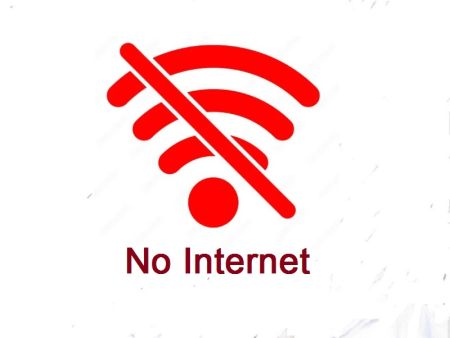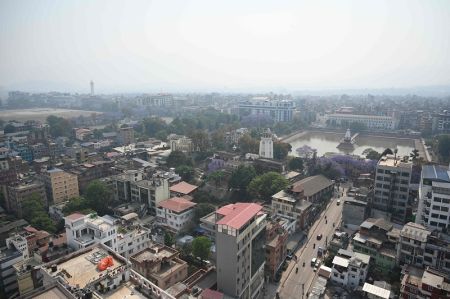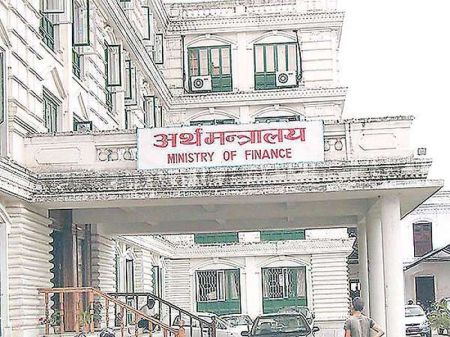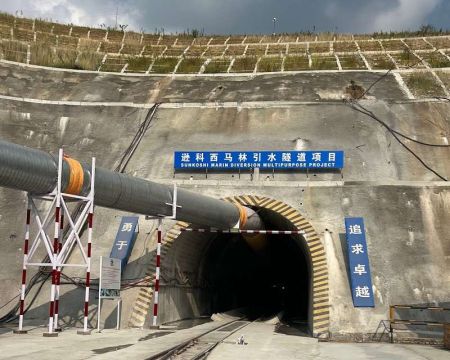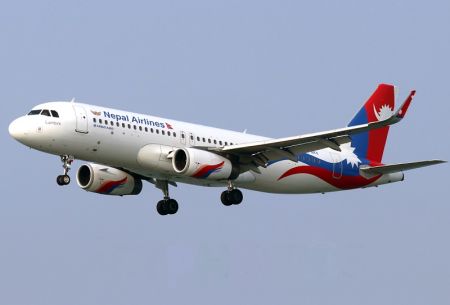You cannot compare a Vodafone campaign in India that targets the urban youth there with an Ncell campaign which has to take into account the rural Nepali audience, too.
In other countries, there is a rebate of 5 to 10 per cent out of the profit that can be spent on advertising that encourages the advertisers to spend more. We need a similar policy in our country.
Â
Being a key player in Nepal’s ad industry for almost two decades, what is your evaluation of its evolution?
Our market has seen tremendous change and ended with a 360 degree turn of success. We only had the state-owned Gorkhapatra and The Rising Nepal in the print media and Nepal Television and Radio Nepal in broadcast media to begin with. Most of the advertising two decades ago constituted government ads and notices. Over the years, Nepali advertising has taken a long leap because consumption patterns have changed and the market has changed, too, because of democracy and several other factors. Multinational companies (MNCs) were not there. FMCG (Fast Moving Consumer Goods) products were very few. Today, we have MNCs, new big companies and many FMCGs. All these changes have brought in new players in the market. The advertising situation has been changing every five years. Today, we are almost on a par with advertising industry in the neighbouring countries. But our online advertising has not grown as expected.
Â
Our market has seen tremendous change and ended with a 360 degree turn of success. We only had the state-owned Gorkhapatra and The Rising Nepal in the print media and Nepal Television and Radio Nepal in broadcast media to begin with. Most of the advertising two decades ago constituted government ads and notices. Over the years, Nepali advertising has taken a long leap because consumption patterns have changed and the market has changed, too, because of democracy and several other factors. Multinational companies (MNCs) were not there. FMCG (Fast Moving Consumer Goods) products were very few. Today, we have MNCs, new big companies and many FMCGs. All these changes have brought in new players in the market. The advertising situation has been changing every five years. Today, we are almost on a par with advertising industry in the neighbouring countries. But our online advertising has not grown as expected.
Â
There seems to be unhealthy competition among the major players on holding onto the clients. How can this be controlled?
Unhealthy competition does exist, but it is not as it was a decade ago. The clients have become more professional and demanding. Leading advertising agencies are under pressure to produce quality ads ever since the clients have started demanding effective campaigns. If you can deliver good work and service to the client, the client is bound to stay on. The smaller advertising agencies, however, continue to compete with each other by offering lower tariff and increased percentage sharing to the clients. I am sure this scenario will change with time once they come to terms with the professional demands of the market. Media exposure has led to clients demanding more professional service as they now know what’s happening in other countries. Compared to a decade ago, there are more advertising agencies producing quality work which has helped bring down unhealthy competition.
Â
Unhealthy competition does exist, but it is not as it was a decade ago. The clients have become more professional and demanding. Leading advertising agencies are under pressure to produce quality ads ever since the clients have started demanding effective campaigns. If you can deliver good work and service to the client, the client is bound to stay on. The smaller advertising agencies, however, continue to compete with each other by offering lower tariff and increased percentage sharing to the clients. I am sure this scenario will change with time once they come to terms with the professional demands of the market. Media exposure has led to clients demanding more professional service as they now know what’s happening in other countries. Compared to a decade ago, there are more advertising agencies producing quality work which has helped bring down unhealthy competition.
Â
Â
Now the ad market of Nepal stands at around Rs 3.5 billion. Are the ad agencies having a good time?
Yes, it is a good time for the ad agencies which are serious and professional. They are prospering and they will be prospering.
Â
Yes, it is a good time for the ad agencies which are serious and professional. They are prospering and they will be prospering.
Â
Prisma has top profi le clients like Bottler’s Nepal, Samsung, Western Union, Ncell and Bajaj, to name a few. How tough is the competition among the agencies?
The competition among the top notch agencies is very healthy and professional. We have a good portfolio of clients but in today’s age of competition, we have to be better than others and perform well to get an edge. So, the competition among the top notch advertising agencies is more in terms of quality and creative work.
The competition among the top notch agencies is very healthy and professional. We have a good portfolio of clients but in today’s age of competition, we have to be better than others and perform well to get an edge. So, the competition among the top notch advertising agencies is more in terms of quality and creative work.
Â
The number of advertisers has grown but the number of ads and the market value have grown more. What is contributing to this growth?
Several factors have contributed to this growth. For one, our urban population is growing consistently and so is the demand for products and brands. MNCs like Unilever and Dabur are pumping in more investments. Another reason for this growth is the change in our consumption habits. Almost 60 per cent of our population is below 32 years of age. This population is literate and possesses decision making capacity which enables them to dictate the market, which in turn, demands the products to be competitive and good. This is where the advertising agencies come in the picture. The entry of new players into the market fuels increased advertising spending from the existing competitors. An example is, when today’s Ncell came in as Mero Mobile, Nepal Telecom was forced to turn aggressive. During its old days of monopoly, it never felt the need for advertising as it does today. Similarly, there are certain sectors that have grown tremendously in recent times. Today, the largest spender in advertising is the education sector. Real Estate sector is another major contributor to Nepal’s advertising industry.
Â
Several factors have contributed to this growth. For one, our urban population is growing consistently and so is the demand for products and brands. MNCs like Unilever and Dabur are pumping in more investments. Another reason for this growth is the change in our consumption habits. Almost 60 per cent of our population is below 32 years of age. This population is literate and possesses decision making capacity which enables them to dictate the market, which in turn, demands the products to be competitive and good. This is where the advertising agencies come in the picture. The entry of new players into the market fuels increased advertising spending from the existing competitors. An example is, when today’s Ncell came in as Mero Mobile, Nepal Telecom was forced to turn aggressive. During its old days of monopoly, it never felt the need for advertising as it does today. Similarly, there are certain sectors that have grown tremendously in recent times. Today, the largest spender in advertising is the education sector. Real Estate sector is another major contributor to Nepal’s advertising industry.
Â
Is the lack of creative talent the only reason our advertisements are not at par with foreign advertisements?
I, for one, do not agree with this. When you look at any other country’s advertisements, for example India, there is sectoral advertising. Each advertisement there targets a special section of the society. Nepal is a market with all sorts of consumers mixed up. I cannot make a very creative ad for a mobile phone company like Ncell as it should cater also to the consumers living in remote Nepal where literacy level is very low. I do not expect such audience to comprehend the message that I will be conveying through a highly creative ad. For example, I cannot compare the comprehension levels of the youth in Kathmandu and Solukhumbu. It’s a major reason why Nepali ads are created in the simplest manner possible. What use is creativity if it cannot sell a product? It would be unfair to judge the creative talents of Nepali advertising professionals given the constraints that they have to face. It would be equally unfair to compare us with international advertising which caters to people with high literacy levels and different mindsets from ours. You cannot compare a Vodafone campaign in India that targets the urban youth there with an Ncell campaign which has to take into account the rural
Nepali audience, too.
I, for one, do not agree with this. When you look at any other country’s advertisements, for example India, there is sectoral advertising. Each advertisement there targets a special section of the society. Nepal is a market with all sorts of consumers mixed up. I cannot make a very creative ad for a mobile phone company like Ncell as it should cater also to the consumers living in remote Nepal where literacy level is very low. I do not expect such audience to comprehend the message that I will be conveying through a highly creative ad. For example, I cannot compare the comprehension levels of the youth in Kathmandu and Solukhumbu. It’s a major reason why Nepali ads are created in the simplest manner possible. What use is creativity if it cannot sell a product? It would be unfair to judge the creative talents of Nepali advertising professionals given the constraints that they have to face. It would be equally unfair to compare us with international advertising which caters to people with high literacy levels and different mindsets from ours. You cannot compare a Vodafone campaign in India that targets the urban youth there with an Ncell campaign which has to take into account the rural
Nepali audience, too.
Â
Aren’t the agencies pressurising the government to introduce a regulatory framework?
We have been pressurising the government for a long time. Despite us being an Rs 3.5 billion industry today, the government has not recognised us and given us due treatment. During election time, politicians seek our assistance to create campaigns which means they do know the importance of advertising even for electoral purposes. However, once the government is formed, they forget that advertising should be treated like an industry.
Â
We have been pressurising the government for a long time. Despite us being an Rs 3.5 billion industry today, the government has not recognised us and given us due treatment. During election time, politicians seek our assistance to create campaigns which means they do know the importance of advertising even for electoral purposes. However, once the government is formed, they forget that advertising should be treated like an industry.
Â
Today’s youth look at careers other than advertising. How does that impact the ad industry?
One of the biggest challenges for our ad industry is the lack of quality human resource. We have not been able to create enough interest among the youth. They would rather aspire for a banking career, for example, which is secure as well as a rewarding career. Advertising is merely a small topic for them while in college and not part of their core curriculum as such. It’s ignorance that’s keeping them from a career in advertising. They probably don’t realise that advertising, too, can be a lifelong and rewarding career. Once they realise this, the problem of quality human resource will have found a solution.
One of the biggest challenges for our ad industry is the lack of quality human resource. We have not been able to create enough interest among the youth. They would rather aspire for a banking career, for example, which is secure as well as a rewarding career. Advertising is merely a small topic for them while in college and not part of their core curriculum as such. It’s ignorance that’s keeping them from a career in advertising. They probably don’t realise that advertising, too, can be a lifelong and rewarding career. Once they realise this, the problem of quality human resource will have found a solution.
Â
Almost all MNC ads are dubbed from foreign languages, mostly from Hindi. Can’t we come out with our own ads for these products?
One reason for dubbed ads is the trickle-down effect of international media in Nepal. For example, multinationals like Unilever want to create synergy among the communication they are doing in this region as most people have already seen the same advertisements on Indian TV channels. Nepal and India have similar culture and consumption patterns. In India, too, they use the same ad in different languages in different states. This way, the advertiser saves the production cost of new advertisements and invests only in releasing them over a number of channels in different languages. Another reason is the celebrity endorsement. Indian celebrities are equally popular in Nepal. A possible solution could be ‘clean feed’ which will block the advertisements on foreign channels aired to Nepal, thus forcing the advertisers to create advertisements in Nepali. However, there is no such policy at this point of time.
One reason for dubbed ads is the trickle-down effect of international media in Nepal. For example, multinationals like Unilever want to create synergy among the communication they are doing in this region as most people have already seen the same advertisements on Indian TV channels. Nepal and India have similar culture and consumption patterns. In India, too, they use the same ad in different languages in different states. This way, the advertiser saves the production cost of new advertisements and invests only in releasing them over a number of channels in different languages. Another reason is the celebrity endorsement. Indian celebrities are equally popular in Nepal. A possible solution could be ‘clean feed’ which will block the advertisements on foreign channels aired to Nepal, thus forcing the advertisers to create advertisements in Nepali. However, there is no such policy at this point of time.
Our ad market is only of Rs 3.5 billion. Isn’t it quite small in size when you consider that a single company allocates more than this for advertisements in other countries?
You have to understand that our market size is rather small. You cannot compare the advertising budget of Indian corporates with that of ours. A company’s turnover usually determines the amount it wants to allocate for advertising spending. Another thing that we need to look into is the potential of the market in terms of growth which also induces the budget of the industry. Thirdly, the government policy doesn’t provide for tax exemption on advertising spending after a certain limit after which the money spent on advertising is not considered as an expense. This discourages advertisers from making sustained investment in advertising. In other countries, there is a rebate of 5 to 10 per cent out of the profit that can be spent on advertising that encourages the advertisers to spend more. We need a similar policy in our country.
Â
You have to understand that our market size is rather small. You cannot compare the advertising budget of Indian corporates with that of ours. A company’s turnover usually determines the amount it wants to allocate for advertising spending. Another thing that we need to look into is the potential of the market in terms of growth which also induces the budget of the industry. Thirdly, the government policy doesn’t provide for tax exemption on advertising spending after a certain limit after which the money spent on advertising is not considered as an expense. This discourages advertisers from making sustained investment in advertising. In other countries, there is a rebate of 5 to 10 per cent out of the profit that can be spent on advertising that encourages the advertisers to spend more. We need a similar policy in our country.
Â
Â
The reported annual growth of 12 to 15 per cent of the ad industry is said to be mainly because of media infl ation. Do you agree?
Inflation is created by the media but there is always a debate in the advertising sector for several reasons. You see electronic media suffering a lot during load shedding. On the other hand, there are advertising categories which have been shrinking because the whole industry has shrunk. Lately, noodles industries’ advertising spending has gone down heavily. But we are still growing. New breed of advertisers such as the real estate, education sector, and lately, DTH have come up. We are growing not just because of media inflation; there is a genuine growth, too. We expect to grow at 20 to 25 per cent looking at the pace of media growth but it is not happening because of the political situation and power cuts.
Inflation is created by the media but there is always a debate in the advertising sector for several reasons. You see electronic media suffering a lot during load shedding. On the other hand, there are advertising categories which have been shrinking because the whole industry has shrunk. Lately, noodles industries’ advertising spending has gone down heavily. But we are still growing. New breed of advertisers such as the real estate, education sector, and lately, DTH have come up. We are growing not just because of media inflation; there is a genuine growth, too. We expect to grow at 20 to 25 per cent looking at the pace of media growth but it is not happening because of the political situation and power cuts.
What is the market share of Prisma?
We are proud to be in the market for 20 years. There are good clients attached with us for more than a decade. Our clients have succeeded in becoming market leaders over the years. We consider good work, recognition and revenue as the most important. It’s important to enjoy a good profit even if the turnover is less. I cannot quote a market share for you but we are holding a good position in the market.
Â
We are proud to be in the market for 20 years. There are good clients attached with us for more than a decade. Our clients have succeeded in becoming market leaders over the years. We consider good work, recognition and revenue as the most important. It’s important to enjoy a good profit even if the turnover is less. I cannot quote a market share for you but we are holding a good position in the market.
Â
Â
Which Nepali ad do you think is the best, either by your agency or some other agency and why?
The biggest and the best campaign that ever happened is the Ncell rebranding from Mero Mobile that we did. The campaign was very successful and we are very proud to have done this campaign. Also, it was the only rebranding ever happened in Nepal.
The biggest and the best campaign that ever happened is the Ncell rebranding from Mero Mobile that we did. The campaign was very successful and we are very proud to have done this campaign. Also, it was the only rebranding ever happened in Nepal.
Â









